3D street art is a concept we have known and loved for a while now. Today, to celebrate the artists who create mind-bending illusions for us to enjoy, we have selected a few of their works to revisit and admire once more.
From pioneers such as Kurt Wenner and Julian Beever to incredibly famous artists like Odeith and Leon Keer, we have selected the works that stand out and transform ordinary streets, buildings, and infrastructure objects into breathtaking optical illusions. These artists push the boundaries of perspective, making us question what is real and what is merely a trick of the eye.
So, let’s hop into the post! For more information on street art, we got in touch with 3D pavement art inventor Kurt Wenner. Read the full interview with him below.
#1 By Odeith

Image credits: odeith
First of all, we asked Kurt to share how his work has influenced the evolution of street art globally.
Kurt wrote: “When I first introduced 3D pavement art in the 1980s, the form didn’t exist. It was born out of my desire to merge classical drawing with contemporary environments, using geometry and perspective to create immersive illusions. Over time, my work inspired a global movement.
Today, artists around the world employ anamorphic techniques in public spaces, advertising, and entertainment, engaging audiences in ways never before imagined. What was once a niche performance has now become an internationally recognized art form, influencing not only street art but digital media, architecture, and even theme park design.
The sheer scale of its adoption has been astonishing, though it’s still evolving in ways I never expected.”
#2 By Braga Last1
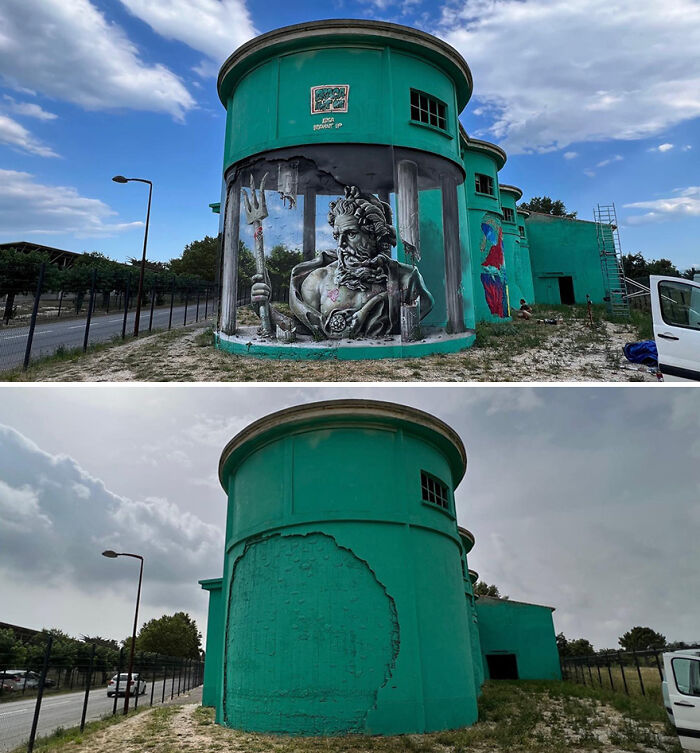
Image credits: braga_last_one
#3 By Shozy
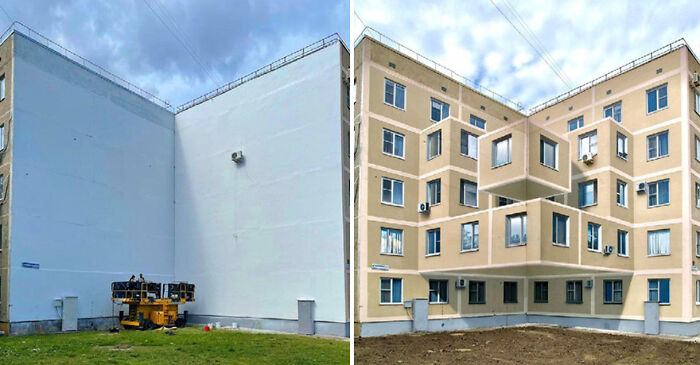
Image credits: sshhozzy
As street art is constantly evolving, we asked Kurt what makes 3D pavement art unique in this movement.
“Most street art focuses on flat surfaces such as walls, facades, even traditional pavement murals. But 3D pavement art does something different: it transforms the ground beneath our feet into a theatrical space where illusion and reality merge. Unlike a mural, which the viewer observes passively, 3D pavement art requires participation. It invites the public to step inside the artwork, interact with it, and even become part of the illusion. It’s an art form that exists in direct dialogue with the viewer’s perspective, both physically and conceptually.
Unlike traditional graffiti, which often imposes itself onto an environment, 3D pavement art integrates with its surroundings and promotes public participation, changing how people experience a space” wrote Kurt.
#4 By Braga Last1
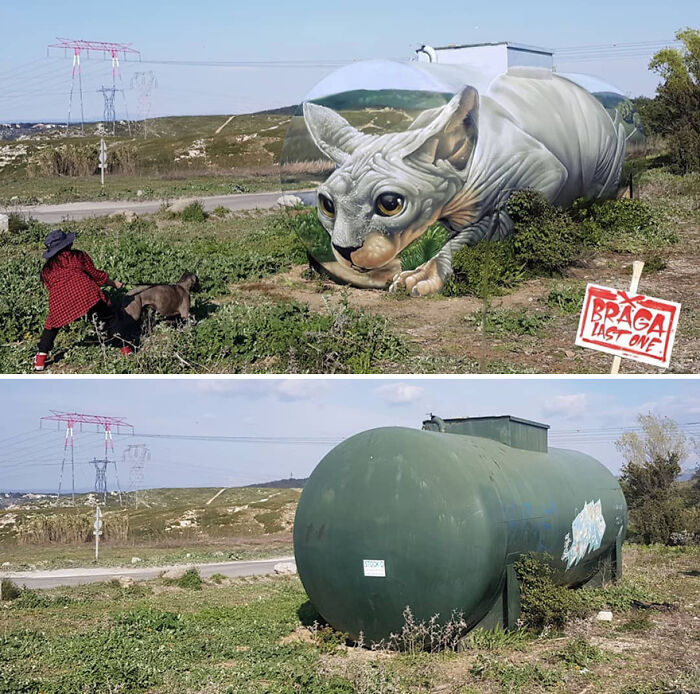
Image credits: braga_last_one
#5 By Odeith

Image credits: odeith
Many street artists use their work to make statements on social or political issues. Therefore, we asked if Kurt sees his art as part of that, or if it focuses on different things.
“I’ve always seen my work as an exploration of visual storytelling rather than a vehicle for direct political or social commentary. My goal has been to reintroduce classical drawing principles to
contemporary audiences in an accessible, engaging way. That said, the very act of bringing classical artistry to the street can be seen as a statement in itself; a challenge to the modernist notion that traditional techniques have no place in contemporary culture.
I believe in reviving forgotten artistic knowledge, showing that mastery of form, proportion, and illusion still holds power in an age dominated by fleeting digital imagery. In that sense, my work does challenge cultural assumptions, but its message is more about artistic continuity than activism,” replied Kurt.
#6 By Leon Keer
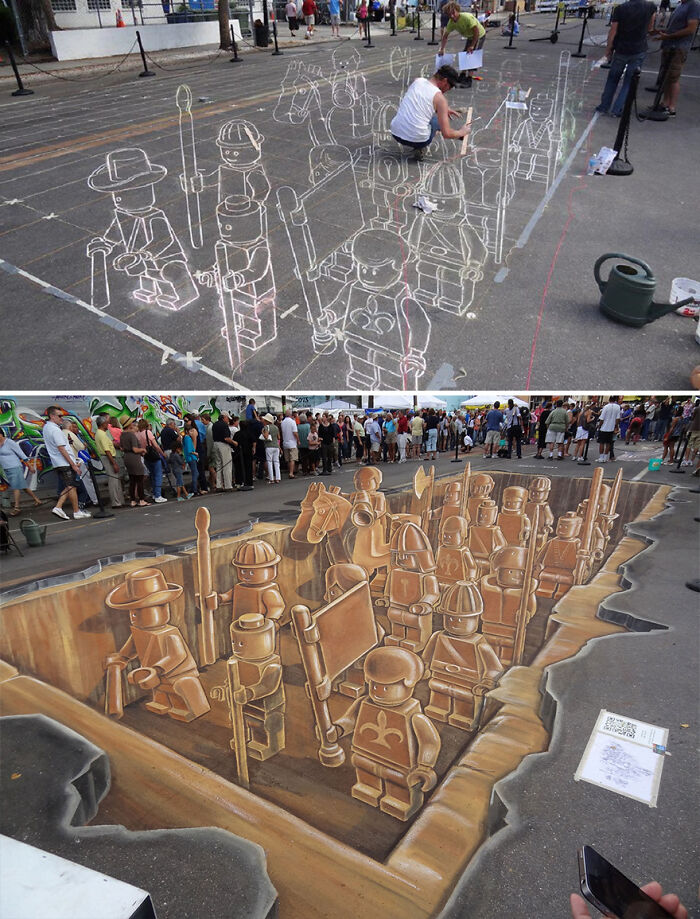
Image credits: leonkeer
#7 By Leon Keer
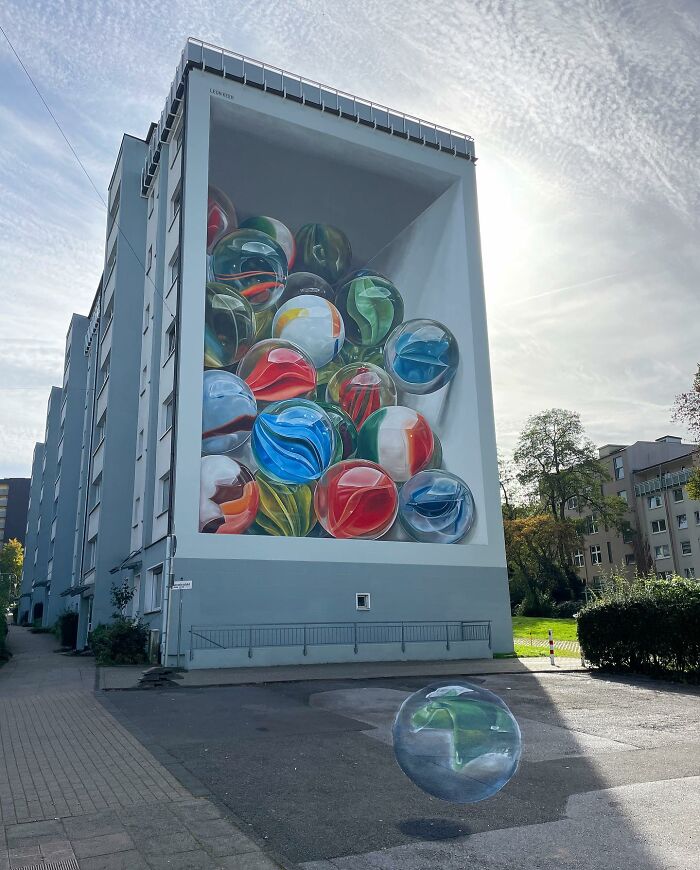
Image credits: leonkeer
Kurt’s and other artists’ works in this list require both artistic skill and mathematical precision. In order to understand how they balance the two when creating a piece, we asked Kurt to share his approach.
“For me, geometry is not separate from art, it is the foundation of it. Classical artists understood that form and proportion were not arbitrary; they were deeply rooted in mathematical relationships.
My approach to 3D pavement art follows this tradition. I begin each piece with a geometric concept, constructing the spatial framework first, before designing the figurative elements and moving into the expressive elements of light, color, and composition. It’s a dialogue between intuition and calculation, where the mathematics must be precise enough to create the illusion but flexible enough to allow for artistic interpretation. The greatest challenge is not in the numbers, it’s in making the illusion feel effortless,” explained Kurt.
#8 By Odeith
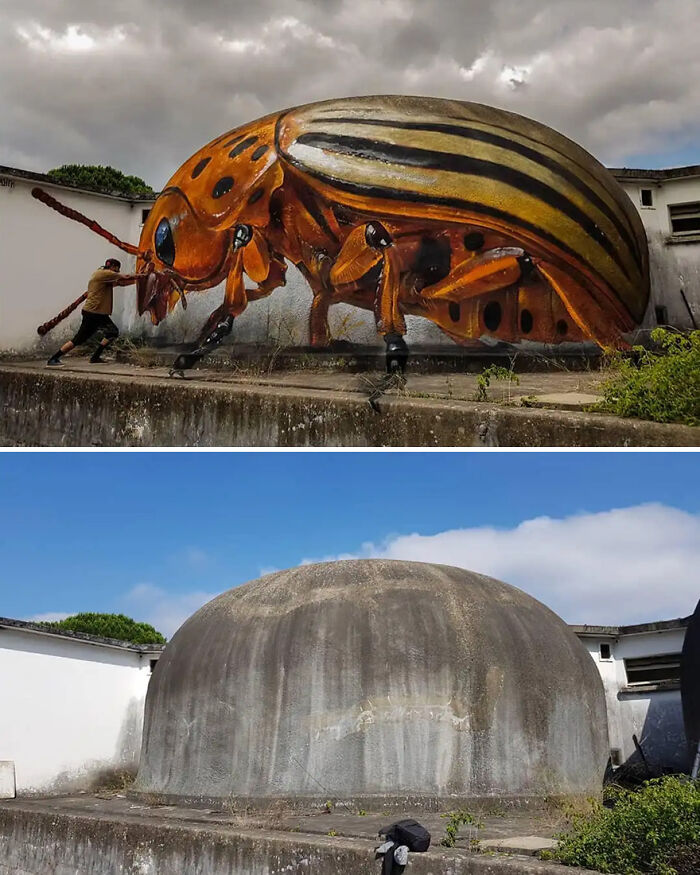
Image credits: odeith
#9 By Shozy
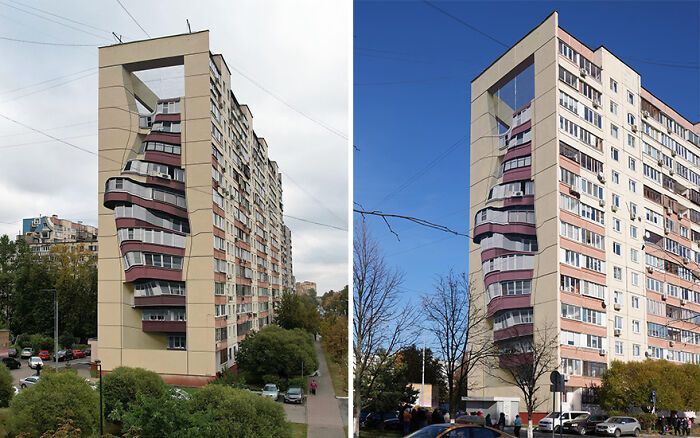
Image credits: sshhozzy
As street art is becoming more mainstream, with brands and galleries embracing it, we were wondering if Kurt thinks it’s a good thing.
He replied: “The mainstreaming of street art is a double-edged sword. On one hand, it brings visibility and financial support to artists who might otherwise struggle to make a living. On the other, it risks commodifying an art form that thrives on spontaneity and direct public engagement. I have found that commissioned works are more effective venues than galleries. With 3D pavement art, I see the future heading in two directions: one toward digital reproduction, where images are printed rather than drawn, and another toward increasingly immersive, site-specific experiences.
Personally, I believe the strongest work will always be created by hand, in real time, as a performance that engages with both the artist and the audience. The challenge is ensuring that as the art form grows, it does not lose the sense of wonder and craftsmanship that makes it unique.”
#10 By Braga Last1

Image credits: braga_last_one
#11 By Cosimo Cheone Caiffa
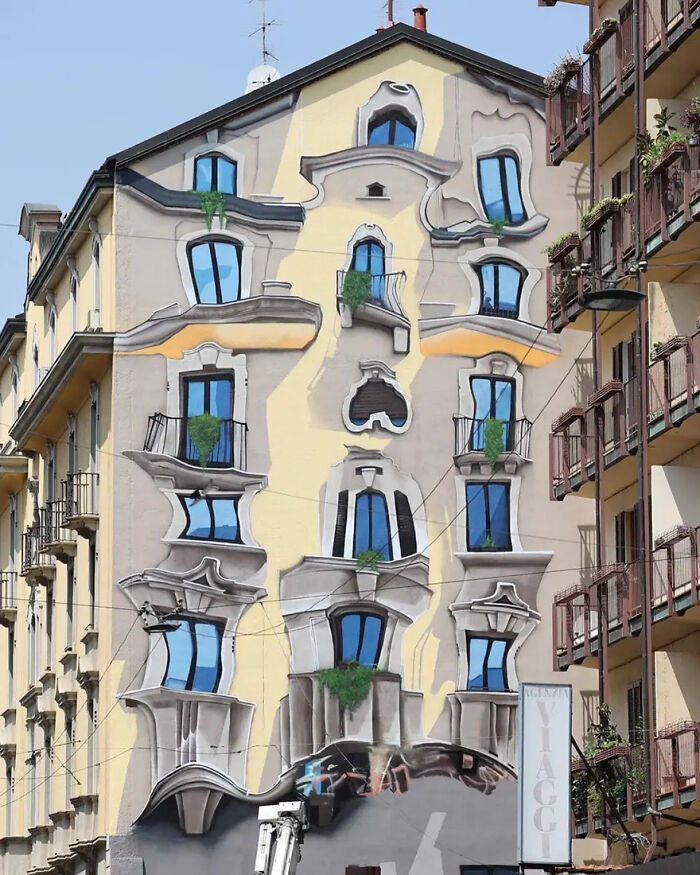
Image credits: cosimocheone1
Lastly, Kurt added: “Art is a universal language, but it is also an evolving one. The classical tradition is not a relic, it is a living, breathing creative process that can still be a foundation for new ideas.
I am currently writing a drawing instruction book on mastering classical drawing, as no book exists that describes the full creative process. I have worked for more than a decade on a full instructional book about artistic geometry, but it is an even more complex topic with profound philosophical and perceptual roots. I am also working on a more fun and accessible book about illusions.
My work has always been about bridging the past with the present, using the tools of classical drawing to create something fresh and unexpected. Whether on the street, in a gallery, or through new technologies, the power of perspective and illusion, both as artistic and intellectual topics, remains as vital as ever. I encourage anyone with an interest in drawing, illusion, or storytelling to explore this tradition, not just as a historical curiosity, but as a tool for seeing the world in new ways.”
#12 By Leon Keer
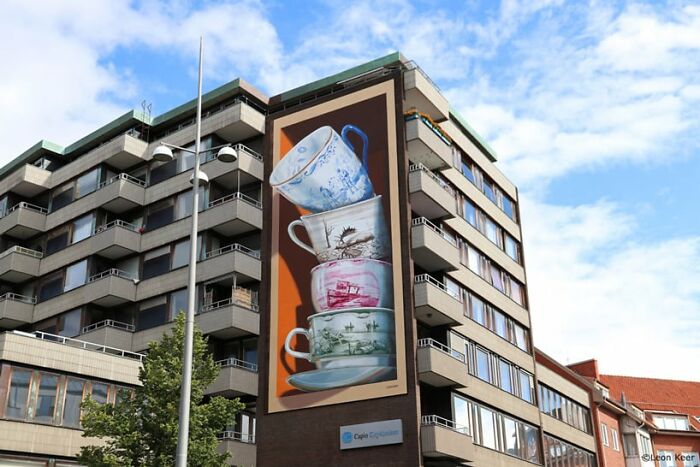
Image credits: leonkeer
#13
Town in Iceland paints 3d zebra crosswalk to slow down speeding cars.
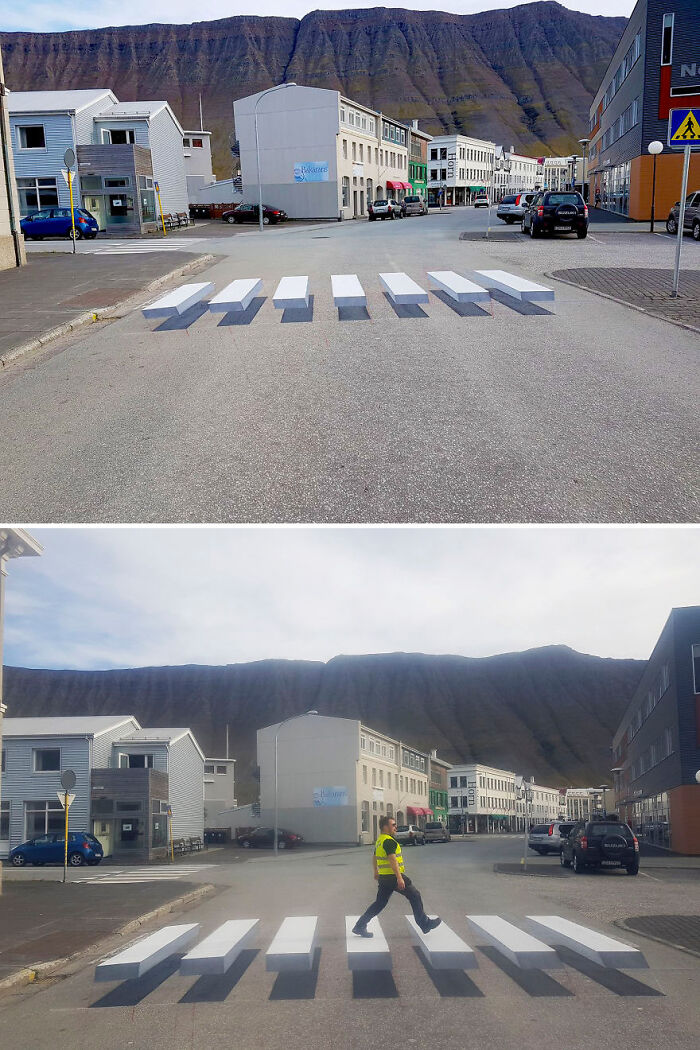
Image credits: bilastaedamalun.is
#14
By Made in Graffiti: The sleeping beauty – In Picardie, France.
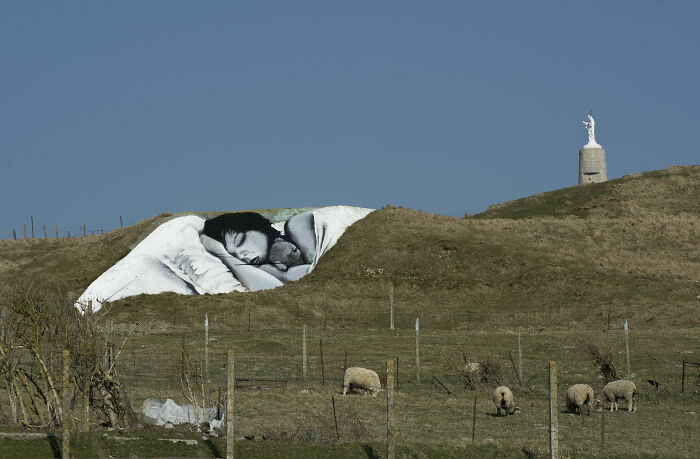
#15 By Wd (Wild Drawing)
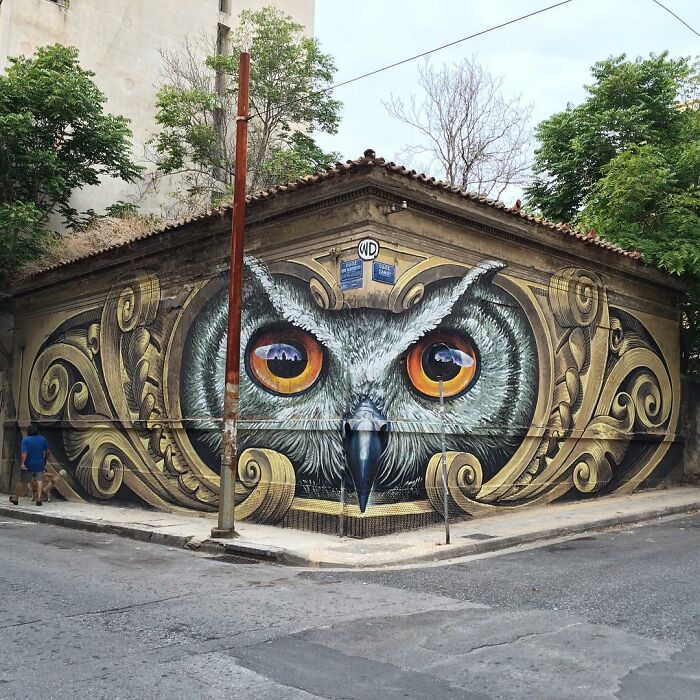
Image credits: wd_wilddrawing
#16 By Jan Is De Man
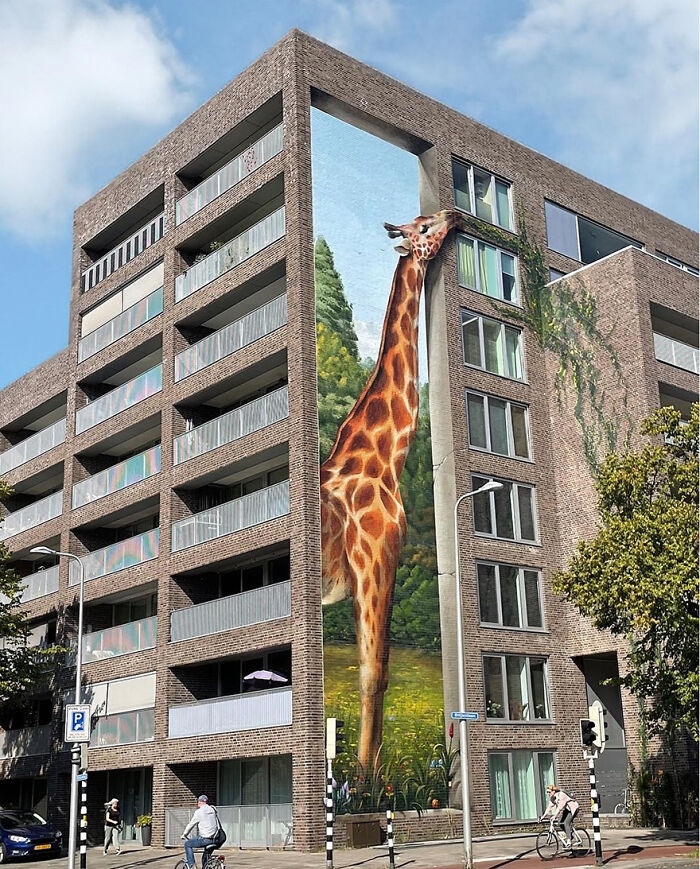
Image credits: janisdeman
#17 By Pioneer Kurt Wenner
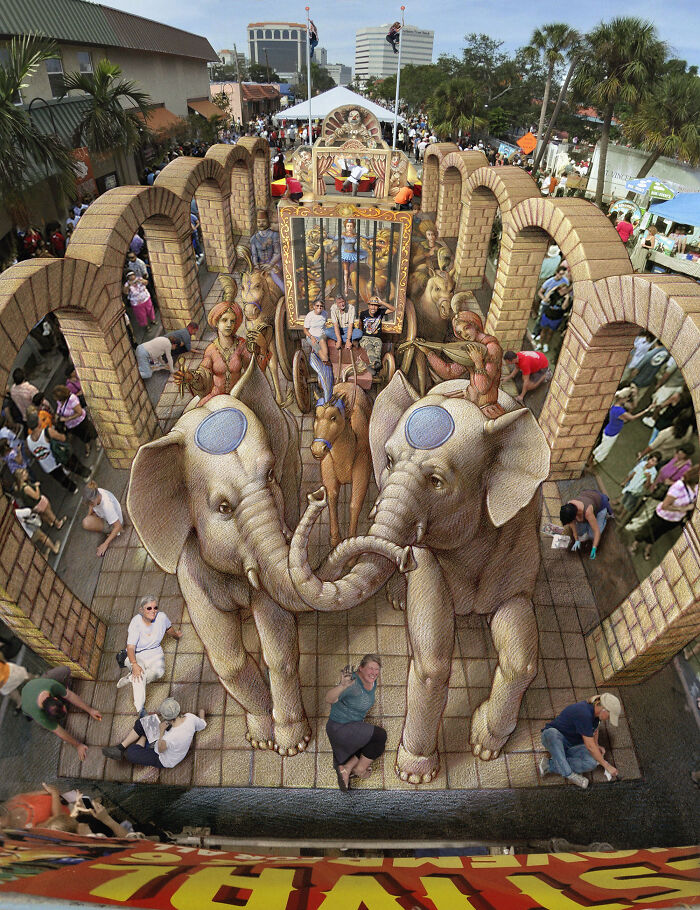
Image credits: 3d.fine.art
#18 By Odeith
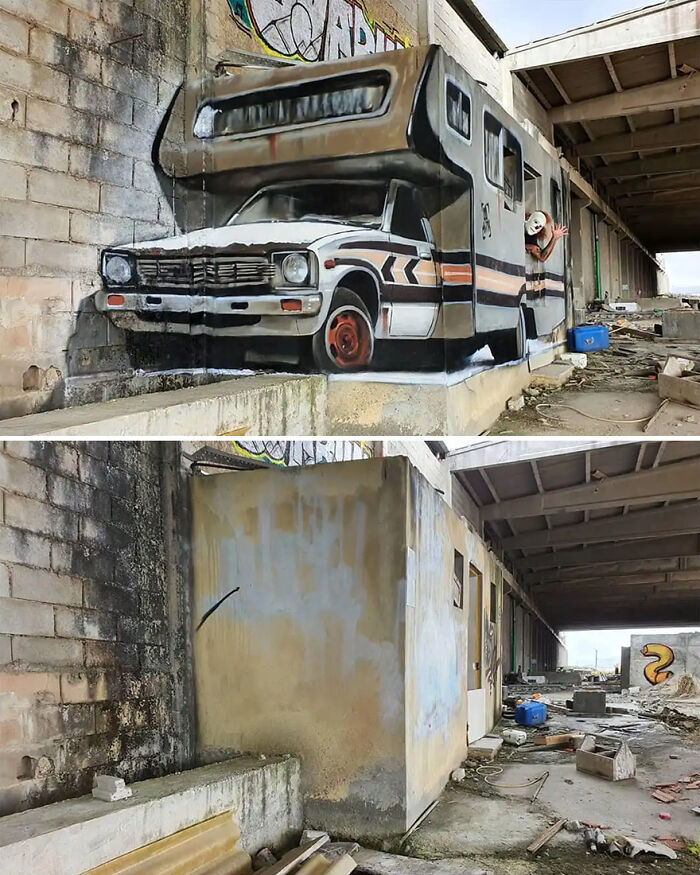
Image credits: odeith
#19 By Shozy
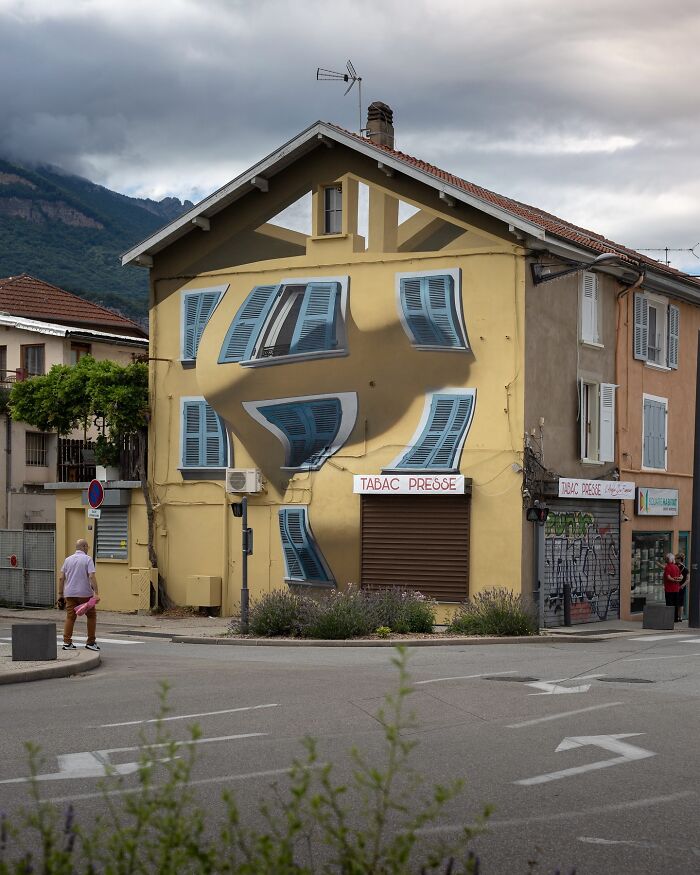
Image credits: sshhozzy
#20 By Pioneer Julian Beever
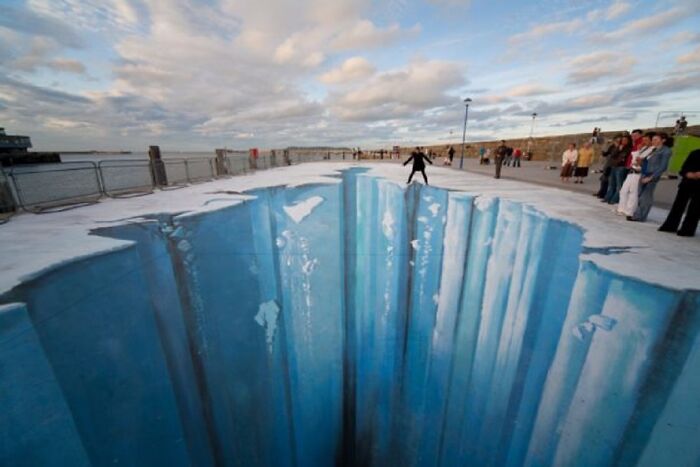
Image credits: julianbeever
#21 By Erik Johansson

Image credits: erik.joh
#22 By Nikolaj Arndt
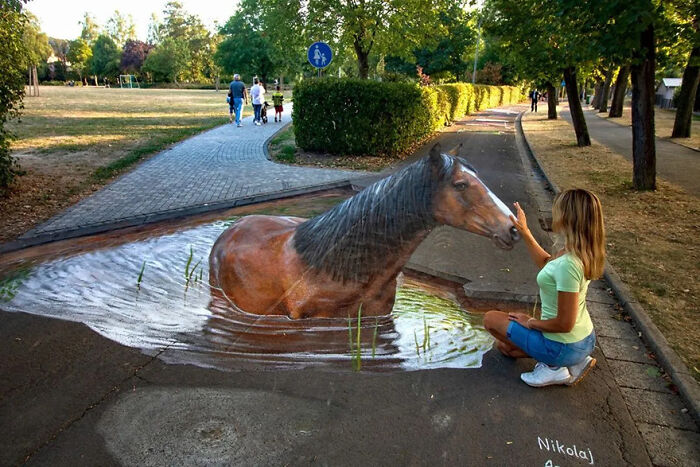
Image credits: nikolajarndt
#23 By Odeith

Image credits: odeith
#24 By Pioneer Kurt Wenner
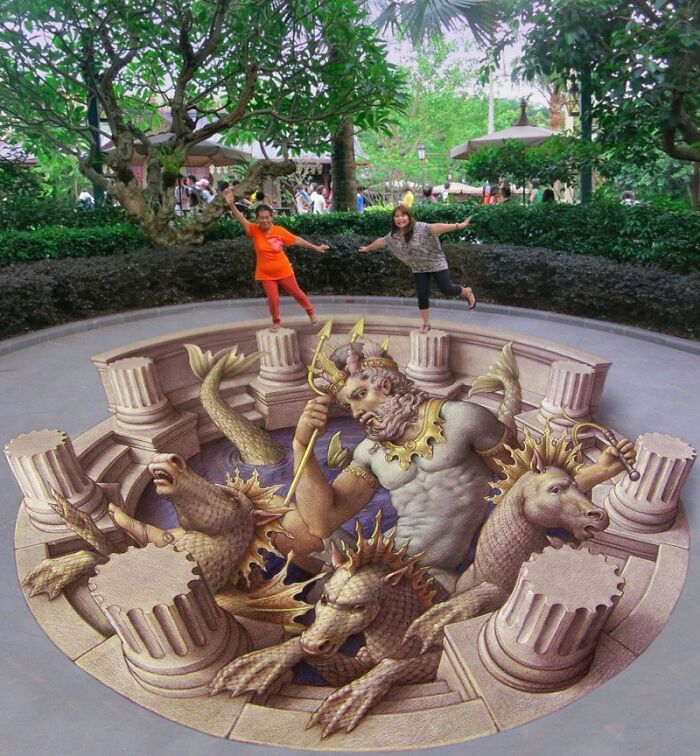
Image credits: 3d.fine.art
#25 By Pioneer Kurt Wenner
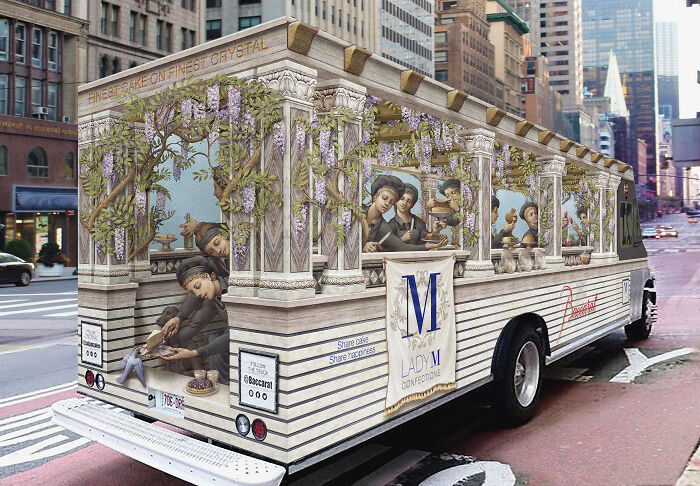
Image credits: 3d.fine.art
#26 By Pioneer Kurt Wenner

Image credits: 3d.fine.art
#27 By Peeta
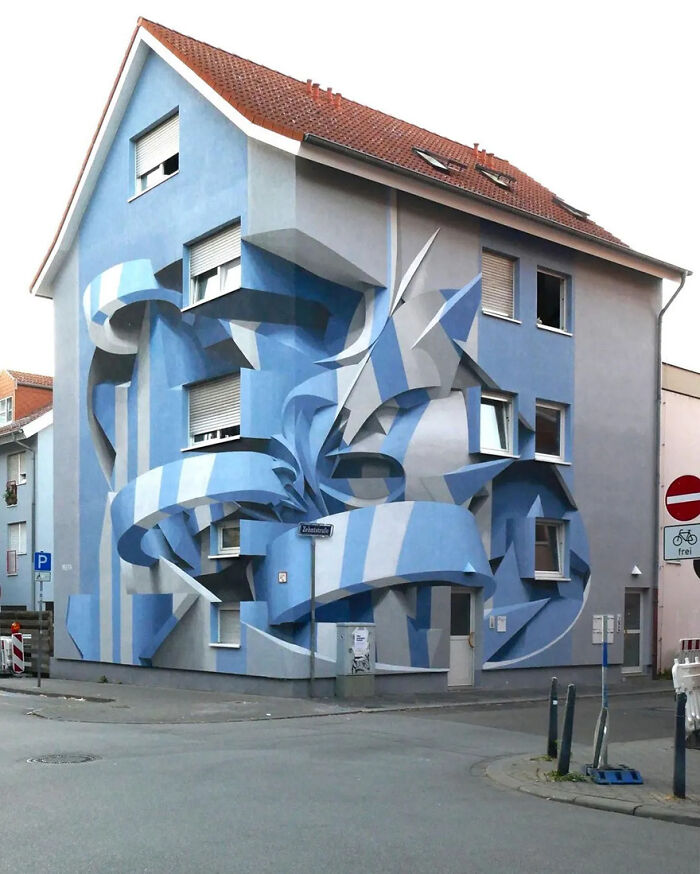
Image credits: peeta_ead
#28 By Eduardo Relero

Image credits: eduardorelero
#29 By Pioneer Kurt Wenner

Image credits: 3d.fine.art
#30 By Eduardo Relero

Image credits: eduardorelero
from Bored Panda https://ift.tt/8OUYeZC
via IFTTT source site : boredpanda